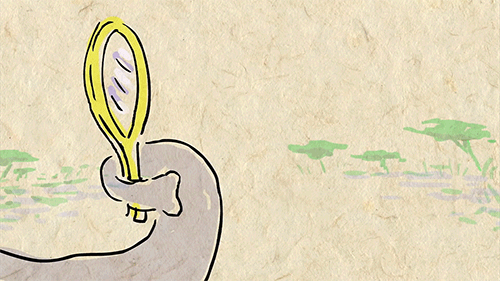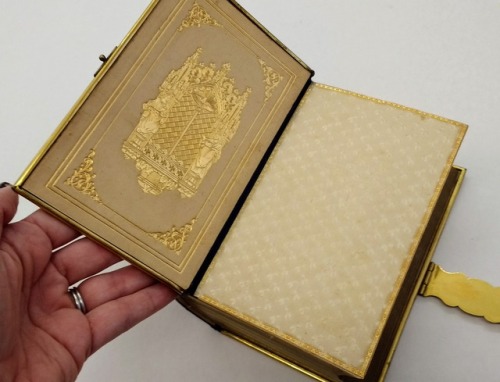My Friend Just Sent Me This So Y'all Have To Suffer Too

My friend just sent me this so y'all have to suffer too
More Posts from Philosophical-amoeba and Others

The @unirdg-collections Squint
The University of Reading holds the archive of original artwork for the much-loved Ladybird children’s book. This painting on board was used to illustrate Exploring Space, a Ladybird ‘Achievements’ Book first published in 1964. The artwork was created by Brian Knight.

If you look closely at the painting, you can see the faint trace of Knight’s initial design for the lunar landing module - just visible under the later amendment.

Published before the first Moon landing in 1969, the fantasy spacecraft was sleek and utopian. It typifies the extent to which The Space Race captured our mid-century imaginations and permeated visual culture. The later correction, based on the Eagle Lunar Module, was printed in subsequent revisions to the book. It was an acknowledgment of a successful mission and testament to Ladybird’s emphasis on accuracy for its young readers.

All artwork is © Ladybird Books Ltd.
12 Amazing Facts About Elephants
In honor of World Elephant Day, we present you with 12 little known facts about one of our favorite creatures…in GIFs, of course.

1. Elephants know every member of their herd and are able to recognize up to 30 companions by sight or smell.

2. They can remember and distinguish particular cues that signal danger and can recall locations long after their last visit.

3. An elephant’s memory is not limited to its herd, nor is it limited to its species. In one instance, two circus elephants that performed together rejoiced when crossing paths 23 years later. Elephants have also recognized humans that they once bonded with after decades apart. 4.

4. The elephant boasts the largest brain of any land mammal as well as an impressive encephalization quotient (the size of the animal’s brain relative to its body size). The elephant’s EQ is nearly as high as a chimpanzee’s.

5. The elephant brain is remarkably similar to the human brain, with as many neurons and synapses, as well as a highly developed hippocampus and cerebral cortex.

6. Elephants are one of the few non-human animals to suffer from post-traumatic stress disorder.

7. Elephants are creative problem solvers.

8. Don’t try to outsmart an elephant! They have an understanding of basic arithmetic and can even keep track of relative quantities.

9. Elephants communicate using everything from body signals to infrared rumbles that can be heard from kilometers away. Their understanding of syntax suggests that they have their own language and grammar.

10. Elephants can recognize 12 distinct tones of music and recreate melodies.

11. Elephants are the only non-human animals to mourn their dead, performing burial rituals and returning to visit graves.

12. Elephants are one of the few species who can recognize themselves in the mirror.
Given what we now know about elephants, and what they continue to teach us about animal intelligence, it is more important than ever to make sure that these magnificent creatures do not vanish.
Check out some more fun elephant facts here and be sure to watch the TED-Ed Lesson Why elephants never forget - Alex Gendler
Animation by the ever-talented Avi Ofer

Nyeleti Nokwazi Nkwinika was a year into her Master’s dissertation in English, and she was struggling. This has nothing to do with her work ethic: the problem lay with her hearing. Nyeleti was born deaf and like many others in her situation, she battles with written language.
Most deaf people are born into hearing families who don’t have any skills in Sign Language. In Nyeleti’s case, she only learned to use South African Sign Language fluently at school. When she got to high school she attended a mainstream hearing school with several other top performing deaf pupils from her previous school.
By then, she had missed out on too many years of access to English. South African Sign Language and English are differently structured. This can make it hard to learn for deaf people who’ve only ever used sign language to communicate. It’s also very difficult to learn written English when one has never heard the language or used it for conversational purposes.




Quick Study of the Maiko’s Furisode Kimono+Undergarments!
Just a simple little vocabulary dump! Still learning the details (there are many!) and would love any corrections or elaborations to be made!

Hadajuban: The first layer underneath a Maiko’s kimono. It is said that Geiko and Maiko don’t wear underwear because it throws off the line of the kimono; instead, they wear multi-layer undergarments.
Nagajuban: Another garment with sleeves, made of cotton, that goes over the Hadajuban.
Koshihimo: An under-wrap belt that holds the undergarments together in a foundation shape for the kimono over it.
Korin belt: Ties the juban collars together.
Obi-Ita: Stiff padding that will help to hold the obi belt in place.
Obi-Makura: “Pillow” that ties around from the front. This supports the front of the obi belt. I’ve read it’s something only girls wearing kimono use.
Eri Shin: Long strand of cardboard or plastic that serves as a collar stiffener.
Tabi: White, sometimes buttoned up, socks that separate the big toe from the rest of the four toes. Worn along with a Maiko’s Okobo or Zori.

Furisode Kimono: Formal-looking kimono with a characteristic of long, billowy sleeves with the seam connecting the top sleeve to the hanging sleeve visible. This kimono is also a popular formal traditional kimono for unmarried women. Originally, furisode kimono were only worn by children (both boys and girls) from well-off or even wealthy families. This connects the tradition of the Maiko symbolizing “childhood” and “youthfulness”.
Maru Obi: Primarily used by Maiko (or traditional brides), these especially formal obi belts are heavy, rich with brocade embroidery and very long. Both sides are usually fully patterned; a Maiko wears her obi tied in the back, one end of the belt folded slightly over the other, cascading in a loose-look down to her ankles.
Obi-jime: A thin braid of stippled silk that wraps around the front of the obi and holds it together with a final touch. The obi clasps are expensive and beautiful bejeweled and are attached to the obi-jime to adorn the front of the kimono.
Please message me if you’d like to add an ingredient to this list! I work with google and the books I have for accurate and complete information, and sometimes I just can’t find all that I’m lookin’ for! Thanks!
( @gion-lady )

Rockfleet Castle, Co. Mayo, Ireland. It’s a former home of Grace O`Malley (Gráinne Mhaol), the famous 16th century ‘Pirate Queen’.
Photo: Mikeoem (CC-BY-SA-4.0 )





Earlier this semester, I got this book out for a class on the material culture of Christianity. It’s a beautiful Bible bound in purple velvet, with gold embellishments, edges, and clasps. It originally came in a leather case lined with silk, which has since fallen to pieces at the joints, but the same silk features on the gilded endpapers. The clasp is even engraved with the initials of the book’s first owner, Josephine Bonaparte Bolton.
This book is beautiful, but it’s even more interesting after reading the note that came with it from its donor, Josephine’s granddaughter:
When Josephine Bonaparte Bolton was sixteen years old, she taught three negro women to read and write. Her mother, Mrs. Wm. Bolton, was so proud of her daughter’s achievement, that she gave her this little Bible as a memento. The Boltons lived in Jefferson City, Missouri.
Josephine Bolton Kerns (Granddaughter)
June 1, 1977
The clasp is dated 1851, which means that the original Josephine broke Missouri law by giving reading and writing lessons to the three African American women mentioned in the note. Missouri law in 1847 stated that “No person shall keep or teach any school for the instruction of negroes or mulattos, in reading or writing, in this State.” Teaching a person of color to read was punishable by a fine of not less than $500 and up to six months in jail.
I could not find any information about either Josephine, but for the most part, the Bolton families of Cole County and Jefferson City seem to have been Confederate sympathizers. Dr. William Bolton, who may have been Josephine’s father, was a prominent Jefferson City physician and a known slave owner. I’d love to know more about Josephine, her mother, and the story behind this beautiful book. Wouldn’t you?
- Kelli
The Holy Bible, containing the Old and New Testaments : translated out of the original tongues, and with the former translations diligently compared and revised, by His Majesty’s special command, appointed to be read in churches. London : Eyre and Spottiswoode, 1848. Rare BS185 1848 .L6

“Brainprint” Biometric ID Hits 100% Accuracy
Psychologists and engineers at Binghamton University in New York say they’ve hit a milestone in the quest to use the unassailable inner workings of the mind as a form of biometric identification. They came up with an electroencephalograph system that proved 100 percent accurate at identifying individuals by the way their brains responded to a series of images. But EEG as a practical means of authentication is still far off.
Many earlier attempts had come close to 100 percent accuracy but couldn’t completely close the gap. “It’s a big deal going from 97 to 100 percent because we imagine the applications for this technology being for high-security situations,” says Sarah Laszlo, the assistant professor of psychology at Binghamton who led the research with electrical engineering professor Zhanpeng Jin.
Perhaps as important as perfect accuracy is that this new form of ID can do something fingerprints and retinal scans have a hard time achieving: It can be “canceled.”
Fingerprint authentication can be reset if the associated data is stolen, because that data can be stored as a mathematically transformed version of itself, points out Clarkson University biometrics expert Stephanie Schuckers. However, that trick doesn’t work if it’s the fingerprint (or the finger) itself that’s stolen. And the theft part, at least, is easier than ever. In 2014 hackers claimed to have cloned German defense minister Ursula von der Leyen’s fingerprints just by taking a high-definition photo of her hands at a public event.
Several early attempts at EEG-based identification sought the equivalent of a fingerprint in the electrical activity of a brain at rest. But this new brain biometric, which its inventors call CEREBRE, dodges the cancelability problem because it’s based on the brain’s responses to a sequence of particular types of images. To keep that ID from being permanently hijacked, those images can be changed or re-sorted to essentially make a new biometric passkey, should the original one somehow be hacked.
CEREBRE, which Laszlo, Jin, and colleagues described in IEEE Transactions in Information Forensics and Security, involves presenting a person wearing an EEG system with images that fall into several categories: foods people feel strongly about, celebrities who also evoke emotions, simple sine waves of different frequencies, and uncommon words. The words and images are usually black and white, but occasionally one is presented in color because that produces its own kind of response.
Each image causes a recognizable change in voltage at the scalp called an event-related potential, or ERP. The different categories of images involve somewhat different combinations of parts of your brain, and they were already known to produce slight differences in the shapes of ERPs in different people. Laszlo’s hypothesis was that using all of them—several more than any other system—would create enough different ERPs to accurately distinguish one person from another.
The EEG responses were fed to software called a classifier. After testing several schemes, including a variety of neural networks and other machine-learning tricks, the engineers found that what actually worked best was a system based on simple cross correlation.
In the experiments, each of the 50 test subjects saw a sequence of 500 images, each flashed for 1 second. “We collected 500, knowing it was overkill,” Laszlo says. Once the researchers crunched the data they found that just 27 images would have been enough to hit the 100 percent mark.
The experiments were done with a high-quality research-grade EEG, which used 30 electrodes attached to the skull with conductive goop. However, the data showed that the system needs only three electrodes for 100 percent identification, and Laszlo says her group is working on simplifying the setup. They’re testing consumer EEG gear from Emotiv and NeuroSky, and they’ve even tried to replicate the work with electrodes embedded in a Google Glass, though the results weren’t spectacular, she says.
For EEG to really be taken seriously as a biometric ID, brain interfaces will need to be pretty commonplace, says Schuckers. That might yet happen. “As we go more and more into wearables as a standard part of our lives, [EEGs] might be more suitable,” she says.
But like any security system, even an EEG biometric will attract hackers. How can you hack something that depends on your thought patterns? One way, explains Laszlo, is to train a hacker’s brain to mimic the right responses. That would involve flashing light into a hacker’s eye at precise times while the person is observing the images. These flashes are known to alter the shape of the ERP.
-
 vagaland liked this · 10 months ago
vagaland liked this · 10 months ago -
 mmmudlark liked this · 1 year ago
mmmudlark liked this · 1 year ago -
 honeyteethh liked this · 1 year ago
honeyteethh liked this · 1 year ago -
 flowersfallingdown liked this · 1 year ago
flowersfallingdown liked this · 1 year ago -
 sprite-and-tranxiety reblogged this · 1 year ago
sprite-and-tranxiety reblogged this · 1 year ago -
 sprite-and-tranxiety liked this · 1 year ago
sprite-and-tranxiety liked this · 1 year ago -
 sjgill3 liked this · 1 year ago
sjgill3 liked this · 1 year ago -
 sunkissedempire liked this · 2 years ago
sunkissedempire liked this · 2 years ago -
 imdaqueenie reblogged this · 2 years ago
imdaqueenie reblogged this · 2 years ago -
 pawsitivelymiraculous liked this · 2 years ago
pawsitivelymiraculous liked this · 2 years ago -
 mommaziza liked this · 2 years ago
mommaziza liked this · 2 years ago -
 ciao-anyway-so liked this · 2 years ago
ciao-anyway-so liked this · 2 years ago -
 fluffedupfox liked this · 2 years ago
fluffedupfox liked this · 2 years ago -
 lil-tumbles liked this · 2 years ago
lil-tumbles liked this · 2 years ago -
 crimsonfeatheredraven reblogged this · 2 years ago
crimsonfeatheredraven reblogged this · 2 years ago -
 surfpunch liked this · 2 years ago
surfpunch liked this · 2 years ago -
 void-of-erebos reblogged this · 2 years ago
void-of-erebos reblogged this · 2 years ago -
 void-of-erebos liked this · 2 years ago
void-of-erebos liked this · 2 years ago -
 disclaimer-performatico reblogged this · 2 years ago
disclaimer-performatico reblogged this · 2 years ago -
 disclaimer-performatico liked this · 2 years ago
disclaimer-performatico liked this · 2 years ago -
 widdendream5 liked this · 2 years ago
widdendream5 liked this · 2 years ago -
 sharpartisan reblogged this · 2 years ago
sharpartisan reblogged this · 2 years ago -
 sharpartisan liked this · 2 years ago
sharpartisan liked this · 2 years ago -
 bipixelsnail reblogged this · 2 years ago
bipixelsnail reblogged this · 2 years ago -
 mx-poth reblogged this · 2 years ago
mx-poth reblogged this · 2 years ago -
 mx-poth liked this · 2 years ago
mx-poth liked this · 2 years ago -
 strawberry-lemonade reblogged this · 2 years ago
strawberry-lemonade reblogged this · 2 years ago -
 strawberry-lemonade liked this · 2 years ago
strawberry-lemonade liked this · 2 years ago -
 justanotherweirdo277 liked this · 2 years ago
justanotherweirdo277 liked this · 2 years ago -
 analviel liked this · 2 years ago
analviel liked this · 2 years ago -
 phis-corner reblogged this · 2 years ago
phis-corner reblogged this · 2 years ago -
 phionph liked this · 2 years ago
phionph liked this · 2 years ago -
 magicalroadtripretroapricot reblogged this · 2 years ago
magicalroadtripretroapricot reblogged this · 2 years ago -
 bluedinosaurglitter reblogged this · 3 years ago
bluedinosaurglitter reblogged this · 3 years ago -
 incorrectanni liked this · 3 years ago
incorrectanni liked this · 3 years ago -
 mo-s-k14142 liked this · 3 years ago
mo-s-k14142 liked this · 3 years ago -
 tannu29 liked this · 3 years ago
tannu29 liked this · 3 years ago -
 soaringhawk159 reblogged this · 3 years ago
soaringhawk159 reblogged this · 3 years ago -
 pakaloloblowin-blog liked this · 4 years ago
pakaloloblowin-blog liked this · 4 years ago -
 bastiaan-deactivated20190305 reblogged this · 4 years ago
bastiaan-deactivated20190305 reblogged this · 4 years ago -
 bastiaan-deactivated20190305 liked this · 4 years ago
bastiaan-deactivated20190305 liked this · 4 years ago -
 squidiosyncrasies reblogged this · 4 years ago
squidiosyncrasies reblogged this · 4 years ago
A reblog of nerdy and quirky stuff that pique my interest.
291 posts





